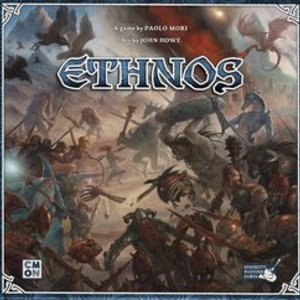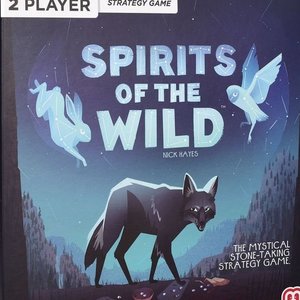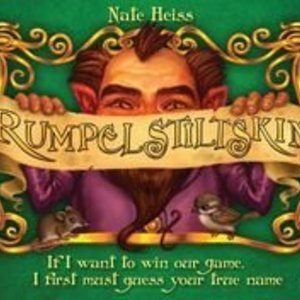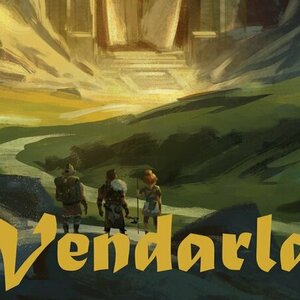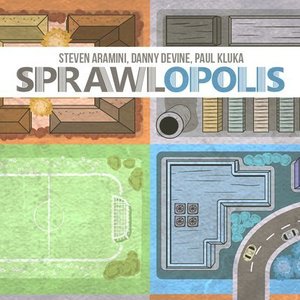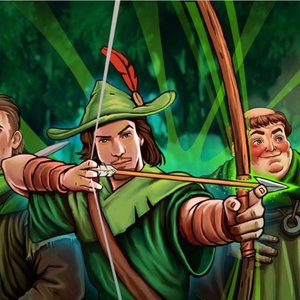Search
Search results

Exploding Kittens® - The Official Game
Games and Entertainment
App
New ways to play! Play with friends or strangers in online play, or play offline with friends...
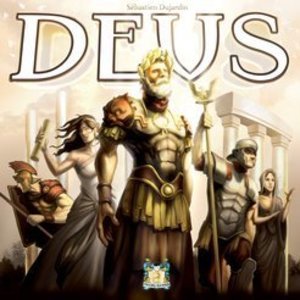
Deus
Tabletop Game
In Deus, players work to develop their own civilizations in a shared environment. Each player starts...
Boardgames CivGames
Purple Phoenix Games (2266 KP) rated Spirits of the Wild in Tabletop Games
Aug 15, 2019
You know how some games just look… delicious? Take Azul’s tiles that remind us of a yummy burst of sugary goodness. Or all the cutie little bits in Everdell. Well, the components in this game are really stellar and are just a joy to play with. Yes, I am jumping the gun with the formula I typically use for my reviews, but just scroll down for a sec and check out the play photo. Just those juicy little stones, the awesome bowl, the nice little coyote mini. They’re great! Anyway, having great components doesn’t necessarily mean that the game will be good. Add to that the fact that I picked this up from Target AND it’s published by Mattel and I really wasn’t expecting much from Spirits of the Wild. I’ll admit I was wrong. This is a great game. This is why –
This is a game about resource management, set collection and a hint of take that. The winner of the game is the player who can most efficiently use the stones they choose from the bowl during the game by assigning them to areas on their player mat. Each area scores points differently, and the game ends at the end of the player’s turn once at least five clear stones have left the provided bag. Let me explain.
DISCLAIMER: I do not intend to cover every single rule included in the rule book, but will describe the overall game flow and major rule set so that our readers may get a sense of how the game plays. For more in depth rules, you may purchase a copy from the publisher directly, from Target, or from your FLGS. -T
To setup the game, place all the stones in the bag. Place the bowl in the middle of the players, and set aside the coyote mini. Place the two stacks of Spirit Cards in the middle of the table. Each player receives a play mat and the same set of cards that indicates an action that can be taken on a turn. Draw out four stones from the bag and place them in the bowl. You are ready to begin.
On a player’s turn, they choose a face up card from the collection in front of them which tells them what to do on their turn. Such actions include take a stone, take two stones, or place some stones in the bowl and take one. Once an action card has been chosen and followed, the player flips it over and it cannot be used on the next turn. One card that can be used at any time instructs the player to take a Spirit Card action and refresh their cards by flipping them all face-up. The cards drive the actions to be made throughout the game, but the game really hinges on the stones and the coyote.
When you take actions to choose stones from the bowl you then have to assign those stones to spots on your play mat. These areas score differently and deciding which stones to grab and where to place them can be agonizing, but only because you can see what your opponent is doing and you really need to set yourself up to score points before the game suddenly has to end and you are stuck unfinished and will be unscoring. Unscoring? You’re welcome, Webster’s Dictionary. The coyote, when placed on an opponent’s play mat prevents stones from being added to that area and can really throw an ACME wrench into your plans. So determining when to move the coyote from your mat onto your opponent’s may really be the difference between sweet, tasty victory and bitter, yucky defeat. Again, play continues until the end of the turn when the fifth clear stone leaves the bag. Oh those clear ones? When placed, you can no longer place stones in that area but will also double that area’s score at the end of the game. So there’s quite a bit going on in your head throughout the game. Delicious!
Components. Well, I kinda already professed my love for them in the intro, so I’ll do it again here. They are wonderful components! I want to just be fidgeting with them all the time.
So is this good? Verily!! The constant struggle between deciding your action card based on the stones in the bowl or refreshing your cards or just going for broke and taking a chance on unscoring an area because there are already three clear stones out but you know at any time three more can make an appearance and end the game is just so satisfying. The components are amazing, the game play is fast and furious (not a sponsor), and you just want to play it again right afterward. Those are my favorite kind of games. If this all sounds like your kind of game, definitely check it out. You won’t be disappointed. I believe anyone would like this one. Purple Phoenix Games gives this one an enthusiastic, but temptation-to-eat-the-stones-resisting 10 / 12.
This is a game about resource management, set collection and a hint of take that. The winner of the game is the player who can most efficiently use the stones they choose from the bowl during the game by assigning them to areas on their player mat. Each area scores points differently, and the game ends at the end of the player’s turn once at least five clear stones have left the provided bag. Let me explain.
DISCLAIMER: I do not intend to cover every single rule included in the rule book, but will describe the overall game flow and major rule set so that our readers may get a sense of how the game plays. For more in depth rules, you may purchase a copy from the publisher directly, from Target, or from your FLGS. -T
To setup the game, place all the stones in the bag. Place the bowl in the middle of the players, and set aside the coyote mini. Place the two stacks of Spirit Cards in the middle of the table. Each player receives a play mat and the same set of cards that indicates an action that can be taken on a turn. Draw out four stones from the bag and place them in the bowl. You are ready to begin.
On a player’s turn, they choose a face up card from the collection in front of them which tells them what to do on their turn. Such actions include take a stone, take two stones, or place some stones in the bowl and take one. Once an action card has been chosen and followed, the player flips it over and it cannot be used on the next turn. One card that can be used at any time instructs the player to take a Spirit Card action and refresh their cards by flipping them all face-up. The cards drive the actions to be made throughout the game, but the game really hinges on the stones and the coyote.
When you take actions to choose stones from the bowl you then have to assign those stones to spots on your play mat. These areas score differently and deciding which stones to grab and where to place them can be agonizing, but only because you can see what your opponent is doing and you really need to set yourself up to score points before the game suddenly has to end and you are stuck unfinished and will be unscoring. Unscoring? You’re welcome, Webster’s Dictionary. The coyote, when placed on an opponent’s play mat prevents stones from being added to that area and can really throw an ACME wrench into your plans. So determining when to move the coyote from your mat onto your opponent’s may really be the difference between sweet, tasty victory and bitter, yucky defeat. Again, play continues until the end of the turn when the fifth clear stone leaves the bag. Oh those clear ones? When placed, you can no longer place stones in that area but will also double that area’s score at the end of the game. So there’s quite a bit going on in your head throughout the game. Delicious!
Components. Well, I kinda already professed my love for them in the intro, so I’ll do it again here. They are wonderful components! I want to just be fidgeting with them all the time.
So is this good? Verily!! The constant struggle between deciding your action card based on the stones in the bowl or refreshing your cards or just going for broke and taking a chance on unscoring an area because there are already three clear stones out but you know at any time three more can make an appearance and end the game is just so satisfying. The components are amazing, the game play is fast and furious (not a sponsor), and you just want to play it again right afterward. Those are my favorite kind of games. If this all sounds like your kind of game, definitely check it out. You won’t be disappointed. I believe anyone would like this one. Purple Phoenix Games gives this one an enthusiastic, but temptation-to-eat-the-stones-resisting 10 / 12.

Euro Slots
Games
App
►►► DOWNLOAD GREAT SLOT EXPERIENCE FOR FREE TODAY! ◄◄◄ Welcome Euro Slots, amazing...
Purple Phoenix Games (2266 KP) rated Rumpelstiltskin in Tabletop Games
Jun 12, 2019
You know the story: the imp (gnome?) that tricked that one lady into promising him her firstborn child in return for spinning hair into gold? You remember? And then she can get her child back if she can guess his true name? Well this game has nothing to do with most of the story. But, it does center around the name guessing part, so there IS a tie back to the original fable. Guessing names is what it’s all about. But do we like it?
During a game of Rumpelstiltskin the players will be attempting to guess the true name of their opponent. The first one to guess correctly will receive a victory cube. The first player to win three of the five victory cubes is the winner! Each player begins the game with the exact same deck of cards to be shuffled. Place the deck face down in front of you, secretly peek at the card on the bottom of the deck and that is your true name to be guessed. On your turn you will play a card and hopefully be able to guess your opponent’s name. Some cards let you guess when played and some cards let you switch up the cards in your deck or your opponent’s. That’s the game.
Components. So it’s like 20 cards and 5 wooden cubes in a small box. The components are all great, as AEG usually has great components. Nothing super amazing (but that art is pretty pretty pretty good).
Ok so here’s the rub. It’s a game that’s just more of an activity than a game. I see what it’s trying to do, but it’s just not much fun. You can win the game with one card. Or it can drag on for like 3 or even 7 cards… It’s just not any fun for me. I only gave it a 2 rating because the art is great and I chuckle when I hear some people try to pronounce the names on the cards. Other than that I don’t think I will want to play this any more. Let me know if you want to take it off my hands.
Purple Phoenix Games gives this one a woeful 5 / 12.
https://purplephoenixgames.wordpress.com/2019/05/02/rumpelstiltskin-review/
During a game of Rumpelstiltskin the players will be attempting to guess the true name of their opponent. The first one to guess correctly will receive a victory cube. The first player to win three of the five victory cubes is the winner! Each player begins the game with the exact same deck of cards to be shuffled. Place the deck face down in front of you, secretly peek at the card on the bottom of the deck and that is your true name to be guessed. On your turn you will play a card and hopefully be able to guess your opponent’s name. Some cards let you guess when played and some cards let you switch up the cards in your deck or your opponent’s. That’s the game.
Components. So it’s like 20 cards and 5 wooden cubes in a small box. The components are all great, as AEG usually has great components. Nothing super amazing (but that art is pretty pretty pretty good).
Ok so here’s the rub. It’s a game that’s just more of an activity than a game. I see what it’s trying to do, but it’s just not much fun. You can win the game with one card. Or it can drag on for like 3 or even 7 cards… It’s just not any fun for me. I only gave it a 2 rating because the art is great and I chuckle when I hear some people try to pronounce the names on the cards. Other than that I don’t think I will want to play this any more. Let me know if you want to take it off my hands.
Purple Phoenix Games gives this one a woeful 5 / 12.
https://purplephoenixgames.wordpress.com/2019/05/02/rumpelstiltskin-review/

Werewolf Online
Entertainment
App
If you have played the classic version of Werewolf where everybody sits in a circle, you are going...
Werewolf Werewolf online card game aura evil good
Purple Phoenix Games (2266 KP) rated Sprawlopolis in Tabletop Games
Jun 12, 2019
One of the best parts of the board gaming experience is finding a fun group of people with whom to play! Sometimes, though, coordinating a game night is easier said than done. We all must occasionally forego the group experience and face the world as the Lonely Only. But fear not! The world of solo-play is a vast and exciting realm! What follows is a chronicle of my journey into the solo-playing world – notes on gameplay, mechanics, rules, difficulty, and overall experience with solo variations of commonly multiplayer games! I hope this will provide some insight as you continue to grow your collection, or explore your already owned games!
If you had the chance to design a city, how would you do it? Would you have a park on every block for some nice greenery, or do you think a large commercial district will bring in more people? What about housing – would people live right in the heart of the city, or would they live more on the outskirts? The day has finally come where those decisions are up to you! Well, mostly. You’ve been hired to help design the ultimate city! The city officials have given you some specific requirements, but beyond that, the plans are up to you! Can you meet their needs while also maximizing your space? It’s time to put your skills to the test and build the best city ever!
Sprawlopolis is a cooperative card placement game of only 18 cards. Given 3 random scoring conditions, you must draw and play cards into the city to fulfill those requirements. Meet or exceed their score, and you win the game! Fail to do so, and you have not succeeded in building the city up to specifications. Be careful how you decide to place your cards, however, because depending on the scoring conditions in play, certain placements could result in negative points at the end of the game. Working together, you and your team must decide which cards to play at what time to ensure that the requirements are all met. Solo play is identical to cooperative play, except that you just always have a hand of 3 cards from which to play. The score to beat each game is dependent on the scoring conditions, so this game isn’t just another beat-your-own-high-score game – you actually have a specific number in mind.
For a game with only 18 cards, there is a lot of variability in Sprawlopolis. I have yet to play 2 identical games. The layout of each card is unique, as are all of the scoring conditions, so the possibilities are endless… almost! I also enjoy playing this game solo because it requires a decent amount of strategy. Three things factor into your final score (the scoring conditions, block groupings, and roads) and it is impossible to succeed by focusing on only one of them. Your strategy is always changing based on the cards in your hand, and you really have to think about how to best utilize each card for maximum end-game points. Depending on when and where you play a card, it could change the entire city so you have to be thinking about the big picture, literally! And a neat thing about Sprawlopolis is that you can overlap cards. So maybe a card you played earlier is not really ideal anymore, given your current hand, so you can just cover up either a portion of it or the entire card!
The hardest thing about Sprawlopolis for me is that certain combinations of scoring conditions can be difficult to complete. One may give you points for a certain type of city block, but then another may take away as many, or more, points for that same type of city block. Or one gives you points for certain roads, but all roads result in negative points during end-game scoring. Since the scoring conditions are chosen randomly, there’s not really a way to negate this unless you just re-draw those cards. You usually can’t just look at a scoring condition combination and know if it will be difficult or not either – you just have to try it. I’m not saying they’re impossible necessarily, just harder to successfully complete.
Overall, I think Sprawlopolis is a neat game. It’s fast and easy to learn, yet strategic enough to keep you coming back for more games. I like to use it as a nice light filler game between some bigger games, or I just like to play it if I’ve got a quick 15 minutes to spare! Sprawlopolis is a fun game to play with a group, and it’s also a fun game to play solo. In my arsenal of solo games, it’s definitely one on standby.
https://purplephoenixgames.wordpress.com/2019/02/11/solo-chronicles-sprawlopolis/
If you had the chance to design a city, how would you do it? Would you have a park on every block for some nice greenery, or do you think a large commercial district will bring in more people? What about housing – would people live right in the heart of the city, or would they live more on the outskirts? The day has finally come where those decisions are up to you! Well, mostly. You’ve been hired to help design the ultimate city! The city officials have given you some specific requirements, but beyond that, the plans are up to you! Can you meet their needs while also maximizing your space? It’s time to put your skills to the test and build the best city ever!
Sprawlopolis is a cooperative card placement game of only 18 cards. Given 3 random scoring conditions, you must draw and play cards into the city to fulfill those requirements. Meet or exceed their score, and you win the game! Fail to do so, and you have not succeeded in building the city up to specifications. Be careful how you decide to place your cards, however, because depending on the scoring conditions in play, certain placements could result in negative points at the end of the game. Working together, you and your team must decide which cards to play at what time to ensure that the requirements are all met. Solo play is identical to cooperative play, except that you just always have a hand of 3 cards from which to play. The score to beat each game is dependent on the scoring conditions, so this game isn’t just another beat-your-own-high-score game – you actually have a specific number in mind.
For a game with only 18 cards, there is a lot of variability in Sprawlopolis. I have yet to play 2 identical games. The layout of each card is unique, as are all of the scoring conditions, so the possibilities are endless… almost! I also enjoy playing this game solo because it requires a decent amount of strategy. Three things factor into your final score (the scoring conditions, block groupings, and roads) and it is impossible to succeed by focusing on only one of them. Your strategy is always changing based on the cards in your hand, and you really have to think about how to best utilize each card for maximum end-game points. Depending on when and where you play a card, it could change the entire city so you have to be thinking about the big picture, literally! And a neat thing about Sprawlopolis is that you can overlap cards. So maybe a card you played earlier is not really ideal anymore, given your current hand, so you can just cover up either a portion of it or the entire card!
The hardest thing about Sprawlopolis for me is that certain combinations of scoring conditions can be difficult to complete. One may give you points for a certain type of city block, but then another may take away as many, or more, points for that same type of city block. Or one gives you points for certain roads, but all roads result in negative points during end-game scoring. Since the scoring conditions are chosen randomly, there’s not really a way to negate this unless you just re-draw those cards. You usually can’t just look at a scoring condition combination and know if it will be difficult or not either – you just have to try it. I’m not saying they’re impossible necessarily, just harder to successfully complete.
Overall, I think Sprawlopolis is a neat game. It’s fast and easy to learn, yet strategic enough to keep you coming back for more games. I like to use it as a nice light filler game between some bigger games, or I just like to play it if I’ve got a quick 15 minutes to spare! Sprawlopolis is a fun game to play with a group, and it’s also a fun game to play solo. In my arsenal of solo games, it’s definitely one on standby.
https://purplephoenixgames.wordpress.com/2019/02/11/solo-chronicles-sprawlopolis/
Purple Phoenix Games (2266 KP) rated Robin Hood: Hero of the People in Tabletop Games
Jun 13, 2019
“Yer a hero, Travis!” … said no Hagrid to me ever in my life. However, I do enjoy playing heroes in my board games. As Robin Hood you live by few rules: rob from the rich, give to the poor, and save your fellow Merry Men. That dastardly Sheriff of Nottingham is out to foil and jail you and your crew. Can you use your skills to rob enough from the rich, recruit your fellows, and keep your bounty on your head low enough to win the game? Such is your plight in this one-player game from first-time designer, Rodney Owen.
Disclaimer: This review is for a Kickstarter preview. We are not being paid for this preview, but we were sent the game from the designer. Components and rules may be changed before the product and project is finished. -T
As this game is not yet in full production, I will paraphrase the rulebook here for you so you can get an idea of how the game plays. Then I will give my opinions on this little card game.
Robin Hood: Hero of the People is a one-player card game that is played over three phases. To win the game you must have all Merry Men and Maid Marian recruited and active, while the bounty on your head is less than 500. You lose by seeing the bounty at or above 1,000 or by playing through the entire deck of Story Cards without winning. You may set the difficulty level by choosing how much you would like the bounty to start at before you begin play (100, 200, or 300). The rulebook instructs you how to setup the game using several piles of cards to create the play area. Deal yourself three Loot (skill) cards and the game is on!
The first phase of the game is Robbing from the Rich. During this phase you draw three (or more depending on other cards currently in play) Loot cards from the big deck. These cards consist of different skills to use later – like Archery, Strength, Swords, etc. You will also find Gold and Influence cards. These Loot cards are needed to recruit Maid Marian and all the Merry Men, as well as used for negating powerful negative Story Card effects in the third phase of the game. Once you have drawn your Loot cards, you may play up to three of them into your Inventory in front of you (unless a card instructs you otherwise). Only your cards in the Inventory will be used to recruit and rescue Merry Men, or be affected by Story Cards.
You have placed your skills and bargaining cards in the Inventory. It is now time to use them to recruit your Merry Men! The second phase is the Actions phase. You have several options of actions to take on your turn, but you may only take one action. One option is to recruit Merry Men characters. Each character card begins the game face-down in a grid. The card backs show the recruitment costs (paid in skills) for each. They all have different skill cost combinations on each back so you must choose your Inventory cards carefully in the first phase. During the game some characters may become jailed through the Story Cards. Also on the backs of the character cards are the costs to rescue your friends from jail, and the costs are different than the recruitment costs. This throws a wrench into your plans as you are trying to recruit and protect all your Merry Men, just to have them thrown in jail and made unavailable to you. Curse you, Sheriff of Nottingham!
Also during this phase, in addition to recruiting and rescuing your allies, you may purchase King Richard cards, Sherwood Forest cards, or decrease your bounty. King Richard cards are very very costly (requiring up to nine skills to purchase!) but also very powerful and very helpful to your cause. There are three of these in the game and when you have used one you must discard it out of the game. Do you have an abundance of skills and Loot cards to use? Would you like to protect your Merry Men from becoming jailed? Well during this phase you may also purchase Sherwood Forest cards to begin building a hideout. It costs two Strength skills, but once you have acquired all six Sherwood Forest cards, most of the Merry Men are protected from being jailed. Huzzah! The final option you have in this phase is spending any three Loot cards from your Inventory to reduce your bounty by 100.
The third and final phase is the Story Card phase. During setup you are instructed to separate this deck into two piles, shuffle them independently, and place the Story Cards in set one on top of the story cards in set two. Set one cards are annoyances that can bleed you of skill cards or raise the bounty on your head. Annoying! The cards in set two are far worse, as they will jail your unprotected Merry Men and set you back further from victory… also whilst raising your bounty. Super annoying!! Curse you again, Sheriff!!
If no win or lose conditions have been met at this time, you will return to the first phase with this additional rule: switch your active character (you start the game with Robin Hood) with another character you have recruited in the grid. Each character has a different special ability to be used on your next turn as well as a different set of skills printed on the face that you may use as discounts for recruitment, rescues, and purchasing of King Richard and Sherwood Forest cards. Example: Much the Miller shows 1x Sword and 1x Strength. You can use his skills as a discount to purchase a Sherwood Forest card by spending just one Strength card from your Inventory. Time to stick it to the Sheriff!
So how does it all shake down? Overall I say the game is really good. It is unfinished, and has not yet made it to Kickstarter, and I suspect that has something to do with any drawbacks I have experienced. Upon reading the provided rulebook and attempting Game 1, I had several rules questions. Rodney was quick to provide answers and it made the game so much more playable and enjoyable. Since it is a solo game only, every decision you make directly impacts how the game is played (duh, right?). There’s nobody else to mess with your plans, nor help them succeed. There’s no AI or ghost player. Just you versus the game. I have played this many times now on different difficulty levels and have won and lost on each. It would seem balanced, however…
There are a few strategies I attempted to use on my different plays to see how they might add to the complexity and change the results. I noticed that I won more when I completely ignored Sherwood Forest and King Richard’s cards. Yes, one of the King Richard cards reduces the bounty by quite a bit, and that’s just in one turn, but the cost is so mighty that I rarely found them enticing enough to pull the trigger. Same goes for Sherwood Forest. Though the cards cost a paltry two Strength, I found that I needed those Strength cards to recruit or rescue my Men and could not justify spending two per card (and six total cards to build the hideout) for that protection. Your play style may vary, and I am itching to play again to try new things out. Maybe I’m wrong about Sherwood Forest. I think that’s a really great trait for a game – to have its players thinking about different strategies while not playing, and just waiting for when they can play again.
I have to say, I am very excited to see this go to Kickstarter, and to learn what Rodney has in mind for improvements to the components, or rule tweaks, and the almighty stretch goals. I might be backing this one, even though I have a great working version of it now…
Disclaimer: This review is for a Kickstarter preview. We are not being paid for this preview, but we were sent the game from the designer. Components and rules may be changed before the product and project is finished. -T
As this game is not yet in full production, I will paraphrase the rulebook here for you so you can get an idea of how the game plays. Then I will give my opinions on this little card game.
Robin Hood: Hero of the People is a one-player card game that is played over three phases. To win the game you must have all Merry Men and Maid Marian recruited and active, while the bounty on your head is less than 500. You lose by seeing the bounty at or above 1,000 or by playing through the entire deck of Story Cards without winning. You may set the difficulty level by choosing how much you would like the bounty to start at before you begin play (100, 200, or 300). The rulebook instructs you how to setup the game using several piles of cards to create the play area. Deal yourself three Loot (skill) cards and the game is on!
The first phase of the game is Robbing from the Rich. During this phase you draw three (or more depending on other cards currently in play) Loot cards from the big deck. These cards consist of different skills to use later – like Archery, Strength, Swords, etc. You will also find Gold and Influence cards. These Loot cards are needed to recruit Maid Marian and all the Merry Men, as well as used for negating powerful negative Story Card effects in the third phase of the game. Once you have drawn your Loot cards, you may play up to three of them into your Inventory in front of you (unless a card instructs you otherwise). Only your cards in the Inventory will be used to recruit and rescue Merry Men, or be affected by Story Cards.
You have placed your skills and bargaining cards in the Inventory. It is now time to use them to recruit your Merry Men! The second phase is the Actions phase. You have several options of actions to take on your turn, but you may only take one action. One option is to recruit Merry Men characters. Each character card begins the game face-down in a grid. The card backs show the recruitment costs (paid in skills) for each. They all have different skill cost combinations on each back so you must choose your Inventory cards carefully in the first phase. During the game some characters may become jailed through the Story Cards. Also on the backs of the character cards are the costs to rescue your friends from jail, and the costs are different than the recruitment costs. This throws a wrench into your plans as you are trying to recruit and protect all your Merry Men, just to have them thrown in jail and made unavailable to you. Curse you, Sheriff of Nottingham!
Also during this phase, in addition to recruiting and rescuing your allies, you may purchase King Richard cards, Sherwood Forest cards, or decrease your bounty. King Richard cards are very very costly (requiring up to nine skills to purchase!) but also very powerful and very helpful to your cause. There are three of these in the game and when you have used one you must discard it out of the game. Do you have an abundance of skills and Loot cards to use? Would you like to protect your Merry Men from becoming jailed? Well during this phase you may also purchase Sherwood Forest cards to begin building a hideout. It costs two Strength skills, but once you have acquired all six Sherwood Forest cards, most of the Merry Men are protected from being jailed. Huzzah! The final option you have in this phase is spending any three Loot cards from your Inventory to reduce your bounty by 100.
The third and final phase is the Story Card phase. During setup you are instructed to separate this deck into two piles, shuffle them independently, and place the Story Cards in set one on top of the story cards in set two. Set one cards are annoyances that can bleed you of skill cards or raise the bounty on your head. Annoying! The cards in set two are far worse, as they will jail your unprotected Merry Men and set you back further from victory… also whilst raising your bounty. Super annoying!! Curse you again, Sheriff!!
If no win or lose conditions have been met at this time, you will return to the first phase with this additional rule: switch your active character (you start the game with Robin Hood) with another character you have recruited in the grid. Each character has a different special ability to be used on your next turn as well as a different set of skills printed on the face that you may use as discounts for recruitment, rescues, and purchasing of King Richard and Sherwood Forest cards. Example: Much the Miller shows 1x Sword and 1x Strength. You can use his skills as a discount to purchase a Sherwood Forest card by spending just one Strength card from your Inventory. Time to stick it to the Sheriff!
So how does it all shake down? Overall I say the game is really good. It is unfinished, and has not yet made it to Kickstarter, and I suspect that has something to do with any drawbacks I have experienced. Upon reading the provided rulebook and attempting Game 1, I had several rules questions. Rodney was quick to provide answers and it made the game so much more playable and enjoyable. Since it is a solo game only, every decision you make directly impacts how the game is played (duh, right?). There’s nobody else to mess with your plans, nor help them succeed. There’s no AI or ghost player. Just you versus the game. I have played this many times now on different difficulty levels and have won and lost on each. It would seem balanced, however…
There are a few strategies I attempted to use on my different plays to see how they might add to the complexity and change the results. I noticed that I won more when I completely ignored Sherwood Forest and King Richard’s cards. Yes, one of the King Richard cards reduces the bounty by quite a bit, and that’s just in one turn, but the cost is so mighty that I rarely found them enticing enough to pull the trigger. Same goes for Sherwood Forest. Though the cards cost a paltry two Strength, I found that I needed those Strength cards to recruit or rescue my Men and could not justify spending two per card (and six total cards to build the hideout) for that protection. Your play style may vary, and I am itching to play again to try new things out. Maybe I’m wrong about Sherwood Forest. I think that’s a really great trait for a game – to have its players thinking about different strategies while not playing, and just waiting for when they can play again.
I have to say, I am very excited to see this go to Kickstarter, and to learn what Rodney has in mind for improvements to the components, or rule tweaks, and the almighty stretch goals. I might be backing this one, even though I have a great working version of it now…
